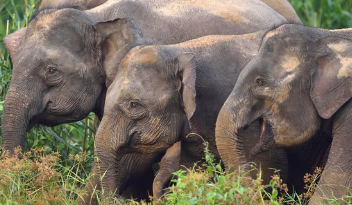Now we are back to blaming humans for extinctions of animals tens of thousands of years ago.
For decades, scientists have debated the reasons behind the extinction of numerous giant plant-eating animals, known as ‘megaherbivores’, such as woolly mammoths and giant sloths, that began disappearing around 50,000 years ago. While some researchers have suggested that dramatic climate changes during the last two Ice Ages were responsible, a comprehensive new study points to a different cause: human activity.
🐆🐆🐆
This day is held each year to highlight species throughout the world that are threatened with extinction.We are proud to be the only organisation in Australia focused on the conservation of endangered wild cats and returning them to the wild! 🐾 #animals #national #wild pic.twitter.com/1l5a7hx0iA
— Markus Nation (@markusnation2) July 2, 2024
This recent research, which amalgamates data from paleo-climate studies, DNA analyses, and archaeological findings, provides compelling evidence that early human hunter-gatherers played a significant role in these extinctions. The study, led by Jens-Christian Svenning of Aarhus University, draws on various sources to argue that the arrival and expansion of behaviorally modern humans into new territories coincided with rapid declines in these large animal populations.
The team employed a novel approach by examining the archaeological record, including ancient traps and weapons linked to large animal hunting. This physical evidence, combined with analyses of human bones and residues on ancient tools, suggests that prehistoric humans had the means and skills to hunt these large animals effectively. Additionally, the study found that megafauna extinctions were equally severe in both climatically stable and unstable regions, further diminishing the likelihood that climate change alone caused these events.
Extinction and preservation: exploring life and death through Kelly O’Dell’s animal glass sculptures https://t.co/qDzPXkdARv via @visualfloodmag
— Visualflood (@visualfloodmag) July 2, 2024
Svenning, who also heads the Danish National Research Foundation’s Center for Ecological Dynamics in a Novel Biosphere (ECONOVO), emphasizes that these large animals were particularly susceptible to overexploitation due to their long gestation periods, low birth rates, and extended time to sexual maturity. This biological vulnerability made them easy targets for early human populations, which were skilled hunters.
The research also highlights the long-term impacts of these extinctions on ecosystems. Megafauna played critical roles in seed dispersal, vegetation shaping, and the nutrient cycle, all of which are essential for maintaining healthy ecosystems. The absence of these large animals has had lasting effects on biodiversity and ecological balance.
Given the ongoing threat to the remaining megafauna from human activities such as poaching and habitat loss, the study calls for proactive conservation and restoration efforts. By reintroducing large mammals into their native habitats, Svenning suggests that we can help restore ecological balances and support biodiversity that evolved in ecosystems once rich in megafauna.
Key Points:
i. A new study challenges the idea that climate change alone caused the extinction of megaherbivores like woolly mammoths, suggesting human predation was the primary driver.
ii. Combining paleo-climate data, DNA analyses, and archaeological evidence, the research shows a correlation between the arrival of humans and the decline of these large species.
iii. Evidence from ancient hunting tools and traps indicates that early humans were capable hunters of megafauna, contributing to their extinction.
iv. The study reveals that megafauna extinctions occurred across both climatically stable and unstable regions, supporting the human impact hypothesis over climate change.
v. The research advocates for the reintroduction of large mammals to restore ecological balances and support biodiversity in modern ecosystems.
Fallon Jacobson – Reprinted with permission of Whatfinger News



